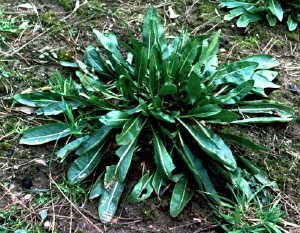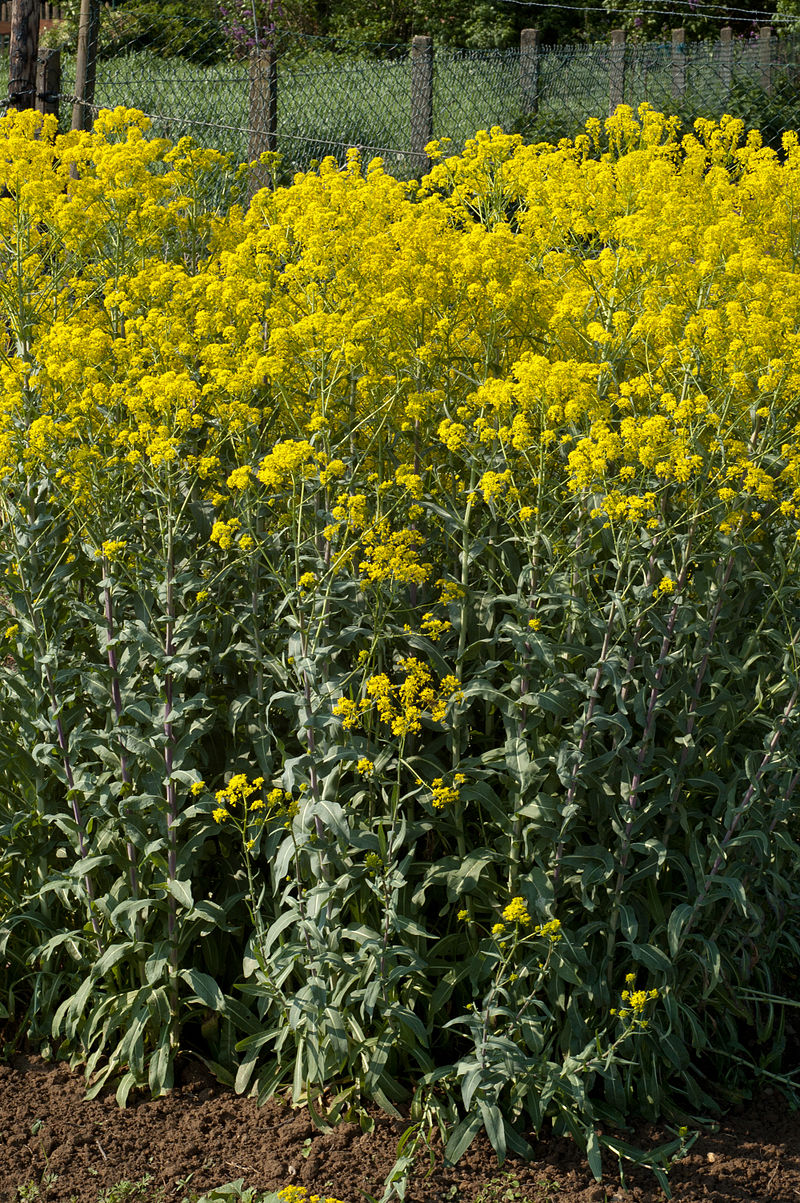
Woad Flowers
Woad (Isatis tinctoria) also called Dyer’s Woad, has been used as a dye for thousands of years. Seeds of this plant have been found in Neolithic (Stone Age) archeological sites. The Egyptians used it to dye the cloth wrappings of their mummies. The economies of some medieval towns such as Toulouse were dependent on woad. Indigo (Indigofera tinctoria) was introduced to Europe in the 1600s. Both dyes were used until the 20th century when they were replaced by synthetic blue dyes.
Woad is native to Central Asia. It is related to mustard. The Chinese used it medicinally. They harvested and dried the taproot in the fall and made teas with it to treat sore throats, fevers, hepatitis and as an antiseptic. There is no scientific evidence that woad is effective against any of these ailments. Caution should be exercised when woad is taken internally. Large amounts or prolonged use could result in kidney damage.

First Year Rosette of Leaves
Woad was brought to North America by the early colonists. It is hardy in USDA growing zones 4 through 8 and has become invasive in some areas of the US and Canada. The plants can be grown as biennials or short-lived perennials. The first year they grow a rosette of leaves with a taproot that can reach 5 feet into the soil. The second year, the plants send up a flower stalk of between 2 and 4 feet tall depending on the amount of sunlight the plant recieves.
The plants grow in almost any kind of soil. Woad reaches its maximum height of 4 feet in full sun but can tolerate some shade which will result in shorter flower stalks of 2 feet. The flowers are yellow and appear in June and July. They should be removed before they go to seed to prevent the plants from spreading and becoming invasive.

Pods Ready For Harvest
Woad is easily grown from seed. The seed can be sown directly into your garden. Soak them overnight and then plant them very shallowly, barely covering the seeds. Germination should occur within ten days. Thin your seedlings to 18 inches apart.
If you wish to save seed for sowing the following year, allow the flowers to die and form pods. Harvest the pods when they are dry and purple. Store the seeds in the pods. The pods contain a germination inhibitor. Remove the seeds from the pods before planting.
The dye is made from the young leaves via fermentation using soda ash.

